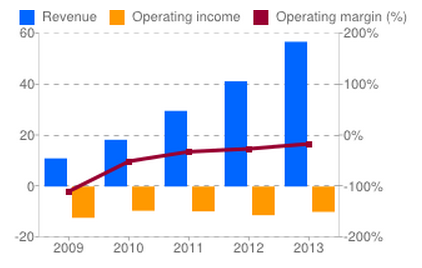For those of us who aren’t day traders, keeping your long positions in check should always be a priority. Deciding on a long position can be daunting – so much analysis and information is available for mutual funds and blue chip stocks that finally taking a position rarely comes without a feeling of relief. Any good long position will rise in value and yield a nice ROI for the shareholder. Two excellent investments are Berkshire Hathaway and a micro-finance company called Microplace (acquired by PayPal in 2006).
Warren Buffet’s Berkshire Hathaway has delivered one of the best ROIs for decades. [Please note, any mention of Berkshire Hathaway in this article refers to BRK.B, which has a 1/1500 value of BRK.A. Both are forms of Berkshire Hathaway common stock.] Mr. Buffett certainly knows how to make his company look attractive at a glance. Berkshire is head and shoulders above other picks: a low beta of 0.51, unheard of earnings per share of $7073.35, and a as-low-as-you can get price to earnings ratio of 0.01. But what about the return? Between January 2002 and January 2012, shares have climbed 61%. An amazing gain, but the volatility of the past decade is hidden in this number. The biggest year-over-year gain for Berkshire during that decade was only 22%, and the biggest loss? -52%. Ouch. Average year over year return for BRK.B from 2002-2012 is a surprisingly modest 3.2%.
Microplace’s investment vehicles are a strategy that remains untapped to many investors. In a nutshell, investors can fund projects that help the world’s poor in four categories – rural areas, women, green, and fair trade. The initial investment is repaid at a set date and at a set return. Microplace must state the usual jargon about risk and that your investment may lose value, but as stated on their site,
“With the caveat that past performance is no guarantee, we’re proud to report that no issuers have defaulted on payments to MicroPlace investors since our inception in 2007.”
Since Microplace investments survived the chaos of the financial meltdown, investing in the world’s poor looks like the closest thing to a guaranteed investment as you can get. The return on investment for different funds ranges from 0.5% to 3.5% yearly.
Now that we’ve scratched the surface on Berkshire and Microplace, let’s compare them side by side in the following four categories: Access to investment, Investment Benefits, Risk, and Return.
|
Berkshire Hathaway (BRK.B) |
Microplace |
| Access to Investment |
Highly Liquid |
Highly Illiquid |
| Investment Benefits |
Benefits BRK.B Shareholders |
Benefits those in Poverty |
| Risk |
Moderate Risk |
Low Risk |
| Return |
3.2% Average YOY |
3.5% YOY (4 year notes) |
Access to investment: Berkshire Hathaway
Like any stock, BRK.B can be sold with a few clicks. Compared to any investment in Microplace that cannot be touched until the expiry date, Berkshire handily wins any liquidity comparison.
Investment Benefits: Microplace
Microplace is really a revolutionary way to invest and allocate your money, and is clearly the more socially-responsible way to bring in a return. Beyond the direct impact, consider the indirect impact – you’ll be able to stand above any wall-streeter at cocktail parties. Mentioning that your money is generating interest while helping women, fair trade, and other causes in countries like Afghanistan, Haiti, and Zambia is sure to turn heads. Everyone owns stocks – few people are directly invested in helping the world’s poor.
Risk: Microplace
As quoted earlier, Microplace has never been snubbed on any money it has distributed. For investors that means their returns come with very low risk. On the other hand, if you invested in Berkshire in January of 2008, in one year you would lose 52% of your investment. I would call that risky.
Return: Berkshire Hathaway
Surprisingly, Microplace can provide a more consistent yearly return on investment (3.5%) than a titan company like Berkshire Hathaway (3.2%). The 3.5% return at Microplace is only attainable through 4 year FINCA Microfinance Notes, yielding a total return of 12.8%. Most other Microplace investments are shorter term, with a lower ROI. Berkshire’s higher potential return gives Buffet’s company the nod in this category.
Full Disclosure: I have previously invested in both Microplace and Berkshire Hathaway.

